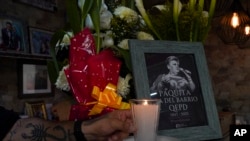The relationship between Catalina Lasa and Juan Pedro Baró challenged the norms of the time and caused the legalization of divorce, in Cuba. This is the story of the first legalized divorce in Cuba, a milestone that was born from the public scandal.
Catalina Lasa, a matancera known for her great beauty, was an icon in High Society Habanera at the end of the 19th century.
He married in 1898 with Pedro Estévez, a man with a prominent family. However, Catalina was conquered by Juan Pedro Baró, a rich landowner and Matanzo aristocrat.
In a country where infidelity was a sin condemned by society, this relationship, which began as a clandestine affair, quickly became a scandal.

But this romance was not just a scandal for infidelity: it was a rebellion against the norms that governed marriage in Cuba at that time.
Catalina and Baró not only challenged the moral of the society of their time, but also fought against a legal system that kept them trapped in unhappy marriages, where the only option for a woman was submission.
In 1905, when Catalina and Baró began their relationship, Cuba did not have a divorce law, which made any attempt to separate an almost impossible fight, especially for women.

When Catalina’s husband, Pedro Estévez, discovered romance, began a judicial process to accuse her of bigamia, although she had not been able to legally divorce him.
This scandal became an episode of public humiliation for Catalina, who, however, did not give up and, with the support of his lover, challenged the system.
Catalina and Baró, after being rejected by Cuban society, decided to flee to Europe, looking for a solution to their legal situation.
They went to Rome, where they got Pope Benedict XV to annul Catalina’s religious marriage, which meant that she was no longer married for the purposes of canon law.
This symbolic act was only the principle of what would be a deep legal change on the island.
The long legal battle that promoted the Divorce Law in Cuba
The legal battle highlighted the failures of a social and legal system that condemned women to unhappy marriages and impossible to dissolve.
Catalina, unable to divorce her first husband in Cuba, had to resort to papal cancellation in Europe. This act broke barriers and opened a public debate on marriage laws in Cuba.
The scandal not only shook the upper classes, but also brought with it the need to modernize the laws on marriage and divorce.
Juan Pedro Baró, in an act of pressure, publicly asked the Cuban government to reformed the laws to allow divorce, and in 1917, under the presidency of Mario García Menocal, Cuba finally approved the Divorce Law.
This was a historical fact that allowed many people, especially women such as Catalina, free themselves from marriages imposed by the family or society.
Symbol of unwavering love
After the legalization of his love, Baró wanted to seal his relationship in an even more symbolic way.
He ordered a mansion to build in the neighborhood of El Vedado, in Havana, as a sign of his devotion to Catalina.
In their gardens, they planted a unique rose, called «Catalina», which became the symbol of their love.
This mansion represented the richness of Baró and his victory over the social norms that had tried to separate them.
The construction of this mansion also had a cultural impact on the island.
It was a unique architectural work designed by the architects Evelio Govantes and Félix Cabarocas, and in its inauguration in 1926, the event became a symbol of Catalina’s power and Baró on social prejudices and legal approval they finally achieved.
The tragic end
However, the happiness of lovers did not last forever.
In 1930, Catalina died at age 55 in Paris, and Juan Pedro Baró sent to build a monumental mausoleum in her honor in the Cemetery of Columbus, in Havana.
This mausoleum, designed by the artist René Lalique, became a symbol of the eternity of Baró’s love for Catalina.
Baró, after the death of his beloved, spent the rest of his days visiting Catalina’s tomb. It is said that he asked to be buried standing, as an eternal guardian of the love he lived with her.
This story, which began as a forbidden romance and ended in tragedy, was much more than a simple love story: it became a symbol of struggle, resistance against an oppressive system.
Legacy of the love of Catalina and Baró
The story of Catalina Lasa and Juan Pedro Baró is a clear example of how love can challenge social norms. In addition, they made history because they understood that love is a social and legal right.
Today, its story remains a reference for a new era in Cuba in which divorce ceased to be a taboo.
Dimecuba It is a multiservicious company focused on Cuban public. With us you can do:
Address: 3750 W 16th AVE Ste 100, Miami, FL 33012, United States. Hours: Monday to Friday from 10:00 a.m. to 8:00 p.m. from 9:00 p.m. to 5:00 p.m. Telephone: +1 786-408-2088.
https://www.dimecuba.com/revista/wp-content/uploads/2025/02/primer-divorcio-cuba.png
#scandalous #romance #caused #divorce #Cuba
Source link
 Latest Breaking News Online News Portal
Latest Breaking News Online News Portal



